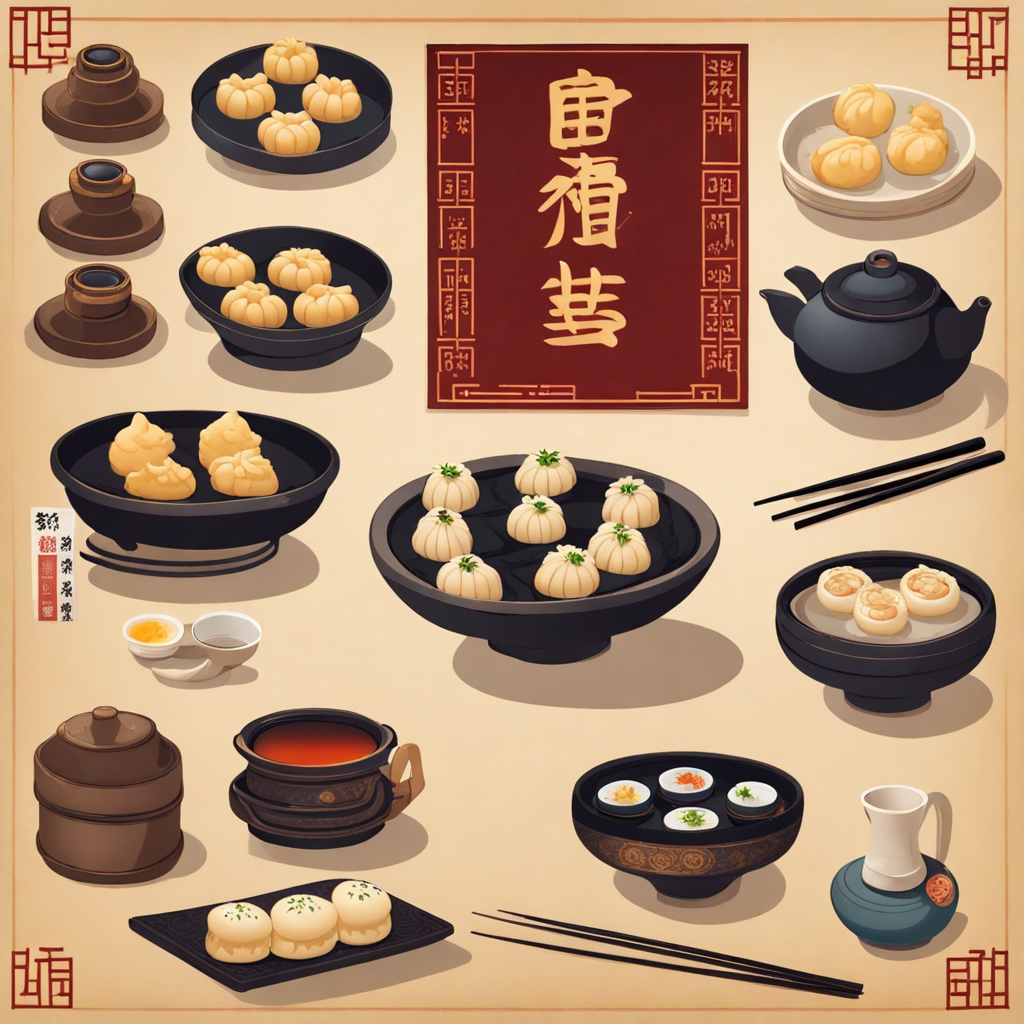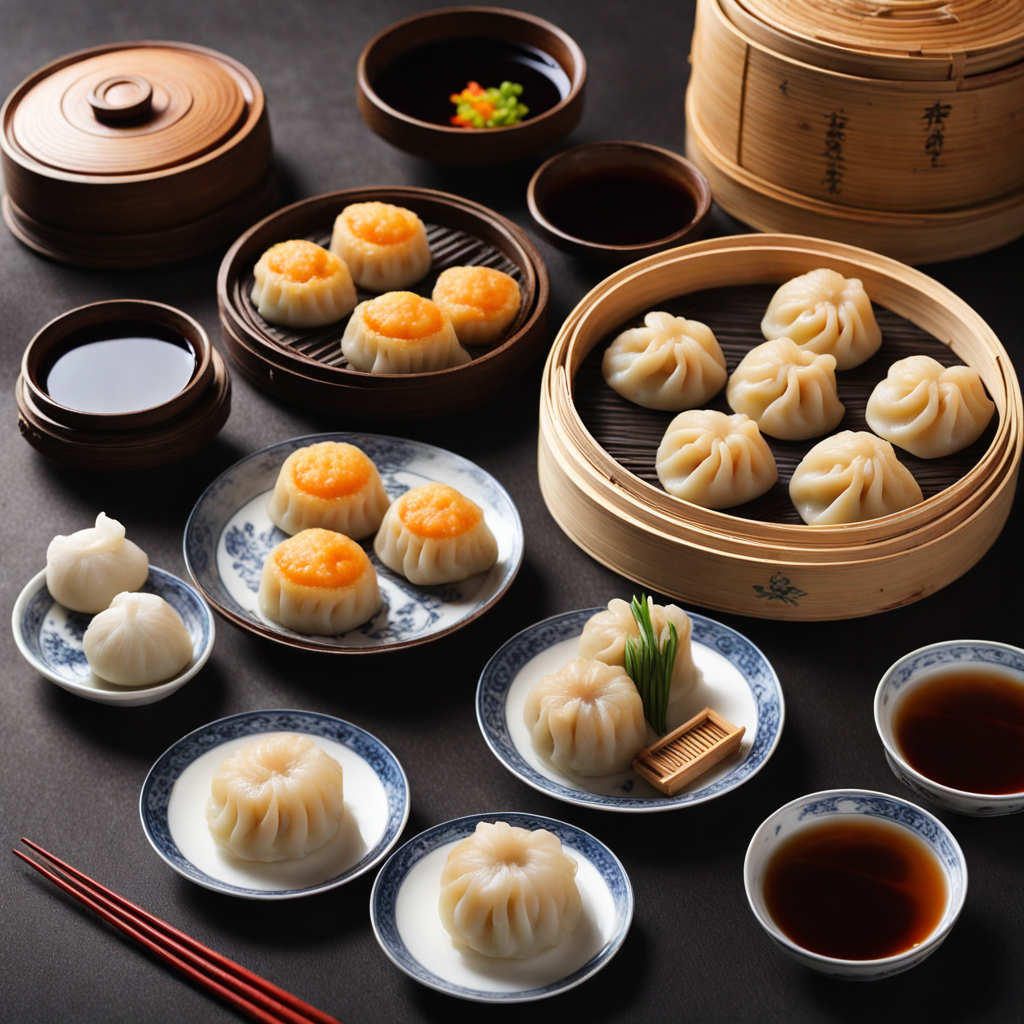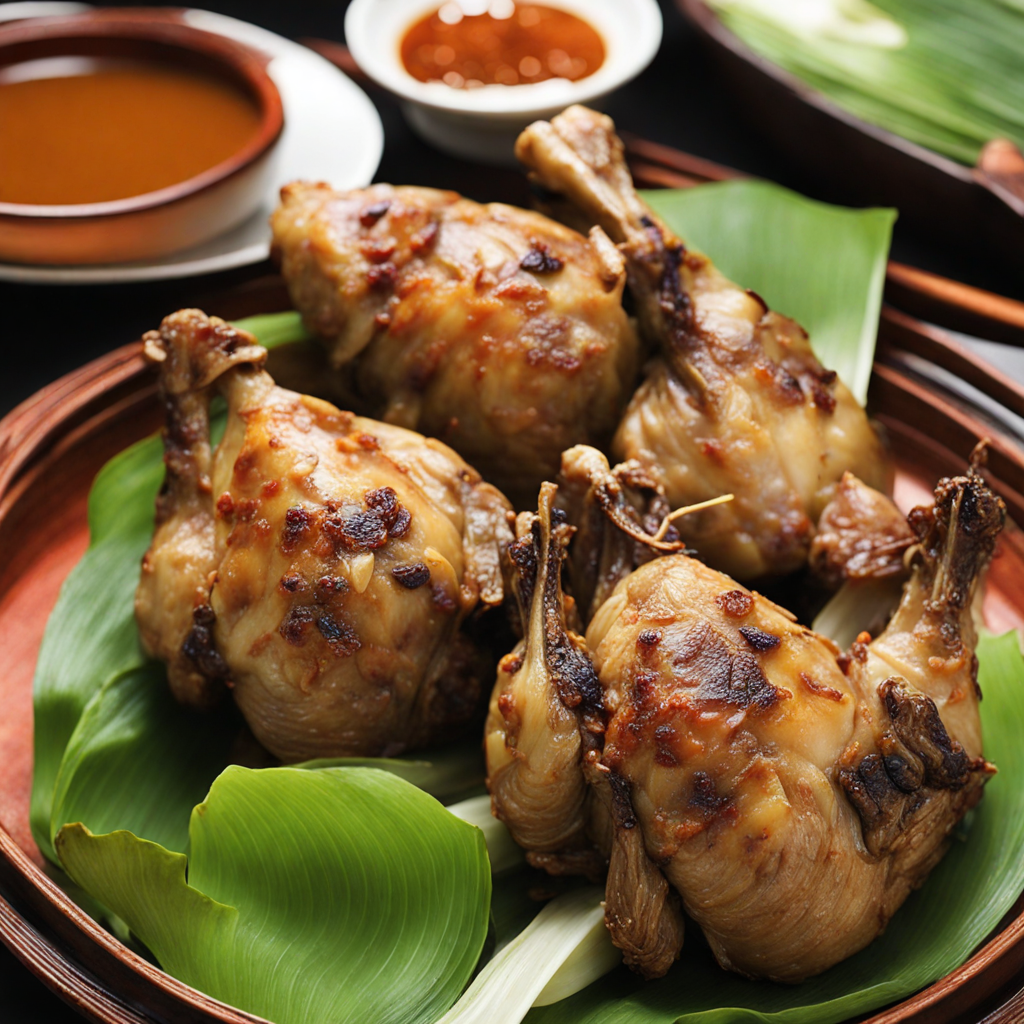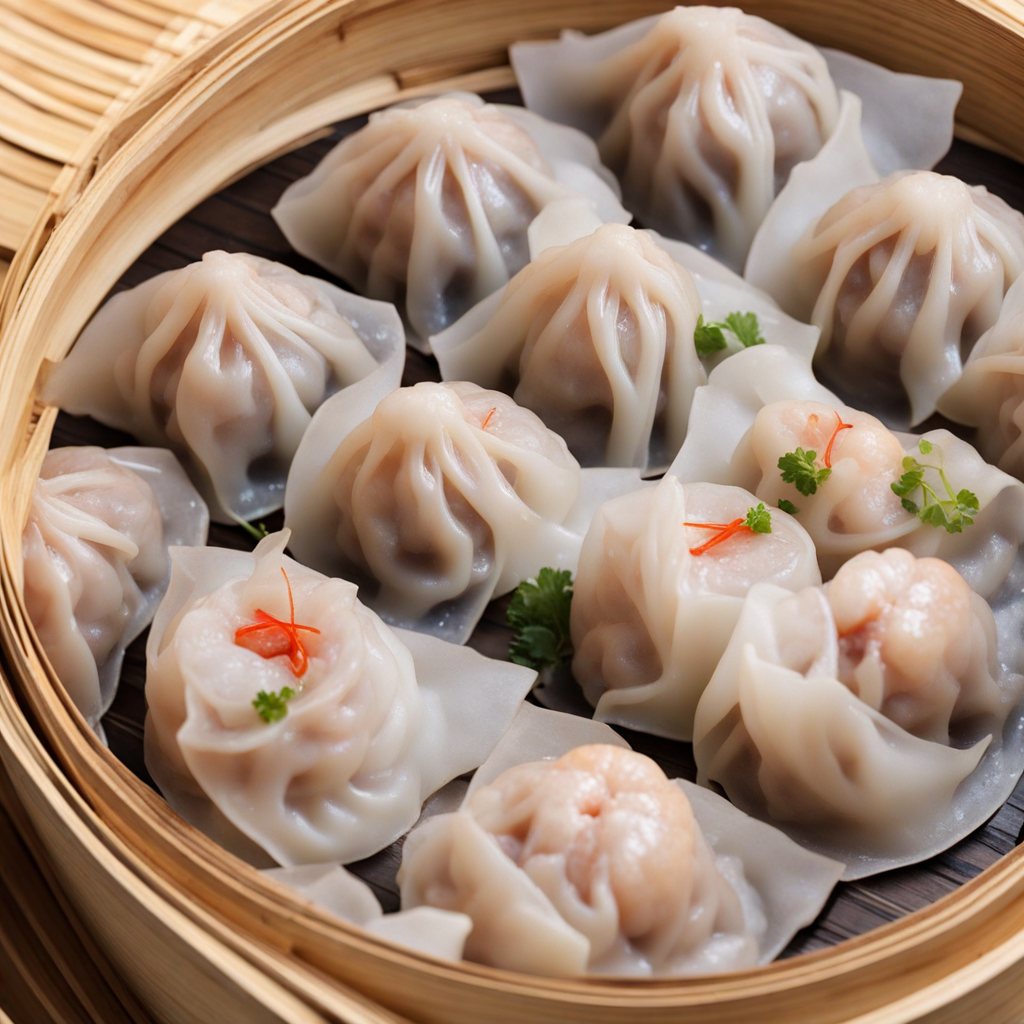Dim Sum
Dim Sum is a delightful culinary experience originating from China, characterized by a variety of small, flavorful dishes that are traditionally served in steamer baskets or on small plates. This style of dining encourages sharing among friends and family, making it a social event as much as a meal. The offerings include an array of dumplings, buns, rolls, and pastries, each with unique fillings and textures, showcasing the skill and creativity of Chinese cuisine. Common ingredients include pork, shrimp, chicken, and an assortment of vegetables, all seasoned with fragrant spices and herbs that tantalize the palate. One of the most popular items in a dim sum repertoire is the steamed dumpling, known as "har gow," which is packed with succulent shrimp and wrapped in a translucent rice flour skin. Another favorite is "siu mai," open-topped dumplings filled with a mixture of minced pork and shrimp, often garnished with a touch of bright orange roe. Baked or steamed buns, such as the fluffy "char siu bao" filled with sweet and savory barbecued pork, provide a delightful contrast in texture. The range of flavors is vast, from savory to sweet, ensuring every diner finds a dish that resonates with their taste buds. In addition to the dumplings, dim sum also features an assortment of other tantalizing dishes, such as crispy spring rolls, flaky egg tarts, and delicate rice noodle rolls filled with shrimp or char siu. Accompanying these delectable bites is typically a pot of fragrant tea, which enhances the overall experience and aids in digestion. The beauty of dim sum lies not only in its diverse flavors but also in its presentation and the shared experience it fosters, making it a must-try for anyone eager to explore new tastes from the rich tapestry of Chinese cuisine.
How It Became This Dish
The History of Dim Sum (点心): A Culinary Journey Through Time Dim sum (点心), a beloved culinary tradition in Chinese culture, is much more than a mere meal; it embodies centuries of history, regional diversity, and cultural significance. The term "dim sum" translates to "touch the heart," which aptly describes the small, delightful dishes that have captured the hearts of many. This exploration delves into the origins, cultural significance, and development of dim sum over the years. #### Origins: A Culinary Tradition Born from Tea Culture The roots of dim sum can be traced back to the ancient Silk Road, where tea was a common beverage for travelers. During the Tang Dynasty (618-907 AD), tea houses began to emerge along trade routes, providing weary travelers with rest and refreshment. These establishments offered simple snacks to accompany tea, laying the groundwork for what would evolve into the dim sum tradition. However, it wasn't until the Song Dynasty (960-1279 AD) that dim sum truly began to flourish. As the popularity of tea drinking grew, so did the assortment of small dishes served alongside it. The literati of the time, who frequented tea houses, would enjoy bites of food, such as steamed buns and dumplings, while discussing literature and philosophy. This practice soon became a social affair, with families and friends gathering to enjoy these small bites. #### Cultural Significance: More Than Just Food Dim sum has always held a significant place in Chinese culture, transcending mere sustenance. It is a symbol of hospitality and communal eating, where families and friends gather to share a meal. Traditionally served in small portions, dim sum encourages sharing, fostering a sense of togetherness that is central to Chinese dining customs. In Cantonese culture, dim sum became an integral part of social life, especially in southern China. The art of dim sum is characterized by its variety, with dishes ranging from dumplings and buns to pastries and congee. This reflects the diversity of regional ingredients and cooking techniques, showcasing the culinary richness of different areas within China. Moreover, dim sum is often associated with celebrations and special occasions. It is a staple during family gatherings, weddings, and festivals, serving as a way to honor traditions and strengthen family bonds. The act of dim sum dining, particularly during the weekend, is a cherished ritual that brings people together, reinforcing social ties and community. #### The Evolution of Dim Sum: From Street Food to Fine Dining As the centuries progressed, dim sum evolved significantly. During the Ming Dynasty (1368-1644), the practice of enjoying dim sum became more formalized. Tea houses began to offer a wider array of dishes, and the presentation of food became increasingly important. This period saw the introduction of steaming techniques, which enhanced flavors while maintaining the nutritional value of ingredients. The Qing Dynasty (1644-1912) marked another pivotal moment in dim sum's history. As the empire expanded, influences from various regions began to permeate Cantonese cuisine. The establishment of the first dim sum restaurant, known as a "yum cha" (饮茶) house, can be attributed to this era, where patrons could enjoy a leisurely meal of tea and small plates. The tradition of serving dim sum in bamboo steamers and decorative platters emerged, enhancing the overall dining experience. In the 20th century, dim sum underwent a transformation with the rise of urbanization and globalization. The bustling streets of Hong Kong became the epicenter of dim sum culture, attracting locals and tourists alike. The introduction of pushcarts in dim sum restaurants allowed for increased variety and accessibility, enabling diners to sample a wide range of dishes without leaving their seats. This innovation made dim sum a more interactive and engaging dining experience, as patrons could select various items directly from the carts. #### Globalization and the Popularity of Dim Sum The latter half of the 20th century saw dim sum's popularity extend beyond Chinese communities, as immigrants brought the tradition to various parts of the world. Cities such as San Francisco, New York, and London began to host dim sum restaurants, catering to an increasingly diverse clientele. This globalization of dim sum introduced new flavors, techniques, and interpretations, creating a dynamic fusion of culinary traditions. Today, dim sum is celebrated worldwide, with numerous adaptations reflecting local tastes and preferences. While traditional dishes like har gow (shrimp dumplings) and siu mai (pork dumplings) remain staples, innovative chefs are experimenting with new ingredients, resulting in a modern take on the classic fare. Vegan and vegetarian options, as well as gluten-free variations, have emerged to accommodate diverse dietary needs, further broadening the appeal of dim sum. #### The Modern Dim Sum Experience In contemporary society, dim sum continues to evolve, merging tradition with innovation. Many restaurants now offer dim sum brunches, where diners can enjoy an extensive menu of small plates served family-style. The social aspect remains paramount, as families and friends come together to savor the experience of sharing food, laughter, and stories. Moreover, the rise of social media has transformed how dim sum is perceived and enjoyed. Instagram-worthy presentations and creative plating have made dim sum not only a culinary delight but also a visual feast. This has fueled a growing interest among food enthusiasts and travelers, who seek to experience authentic dim sum as part of their culinary adventures. #### Conclusion: A Timeless Tradition Dim sum is much more than a meal; it is a reflection of Chinese culture, history, and community. From humble beginnings as a snack for tea drinkers to its status as a global culinary phenomenon, dim sum has evolved while retaining its essence of sharing and togetherness. Today, it continues to be a cherished tradition that brings people together, transcending borders and cultures, embodying the spirit of hospitality and celebration. As we savor each bite, we partake in a historical narrative that spans centuries, reminding us of the importance of food in forging connections and creating lasting memories.
You may like
Discover local flavors from China







